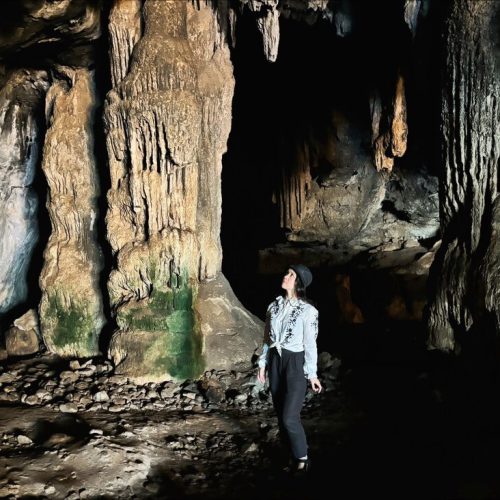
I wasn’t too sure what to expect from Avebury beyond a bunch of really old stones. Well, I knew they weren’t just any old stones.
This wouldn’t be my first steps into the world of stone circles, previously visiting Ales Stenar in Sweden and Stonehenge – the most famous stone circles in the world. And while I loved the atmosphere of Ales Stenar, I found Stonehenge too touristy and too expensive to fully enjoy. So I crossed my fingers and toes and hoped that Avebury would be different.
And it was! Avebury completely blew all my expectations out of the water. My only regret is that I didn’t have more time for exploration because the site is huge – far more expansive than I first imagined.
In fact, it’s home to the world’s largest prehistoric circle of standing stones, measuring almost 1.5 kilometres in circumference. Outside of the circle, the complex expands further to include West Kennet Long Barrow – an ancient communal tomb that you can visit inside if the idea doesn’t give you the heebie jeebies.
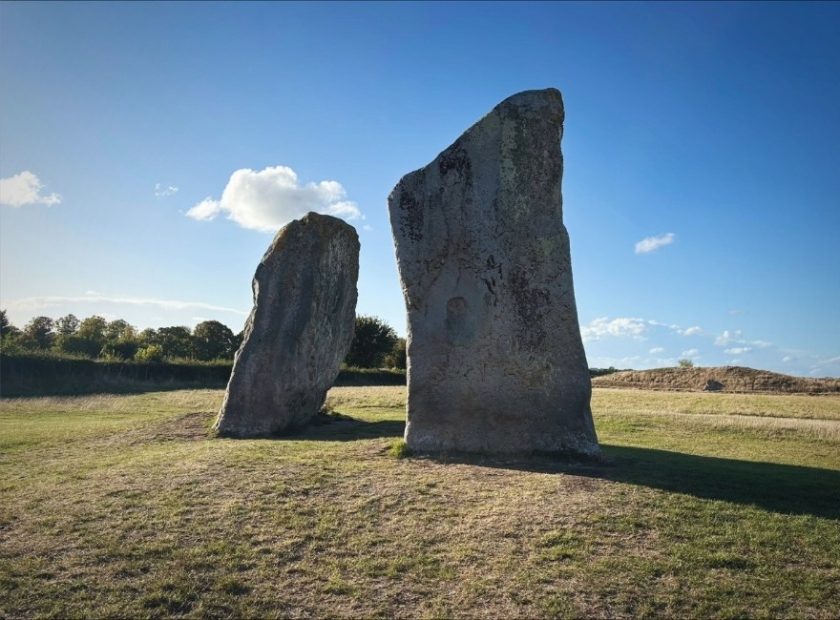
More enjoyable than Stonehenge
I don’t really like comparing places, but sometimes it’s hard not to when they share similar characteristics. Compared to Stonehenge, Avebury is quieter, more peaceful, and personally, I’d say much more enjoyable. Oh, and apart from £7 to park the car for the day, it’s free.
It’s a shame that people visit Stonehenge without knowing this place exists despite being just 38km apart. So much so, I found myself scratching my head and asking the question, why is it not more popular?
Call me cynical, but I think a part of it is because Stonehenge is extremely photogenic and very well-marketed. Avebury on the other-hand is sprawling. A single photo simply cannot give justice to this place and the way it makes you feel. And it definitely makes you feel something. It’s a mood, alright.
The town itself is like something conceived in a fairytale. Picture thatched-cottages, a millennial-old church, and many winding paths, all living and breathing among a crop of mysterious stones.
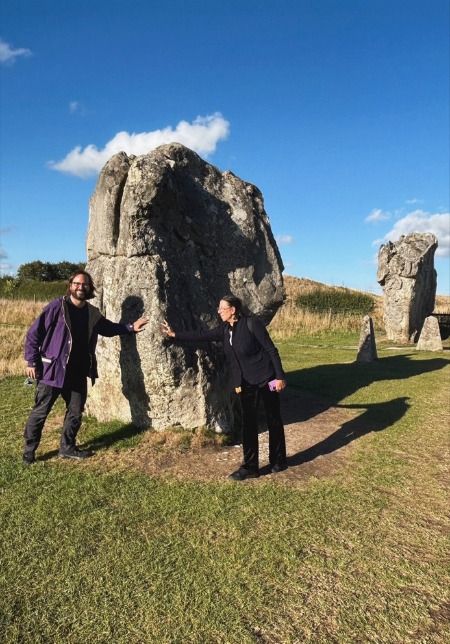
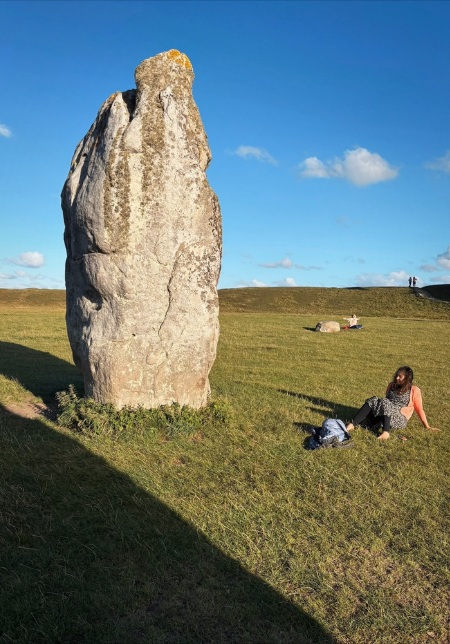
Brief history of Avebury
Let me preface this by saying I’ve never studied archeology so feel free to add more information in the comment section if you think I’ve missed out anything important. I’d be happy to include it in the post if it’s relevant.
The prehistoric landscape of Avebury was born around 2600 BCE, in the middle of the Neolithic age. That fascinating period when Britain was still covered in wild forest and people were just starting to settle, farm, and think about things like ceremony and community. It would have been a massive undertaking: tens of thousands of hours of labour with nothing more advanced than antler picks, stone axes and brute force.
First, they began with the henge. A deep circular ditch that was believed to be up to 9 metres deep (but now slopes in gently at around 3 metres deep). Once the henge was dug, the stones came next: sarsens, giant sandstone blocks scattered across the downs.

The biggest weigh upwards of 60 tonnes, and largest recorded stands at a hefty 100 tonnes, so big that it mind-bogglingly extends at least 2 metres underground.
They were levered out of the ground from nearby Marlborough Downs, dragged for a few miles on wooden sledges, probably using ropes made of twisted plant fiber or animal hide. Teams of people hauled them to Avebury – relentlessly, year after year, until the work was done.
The result was a massive outer circle. Originally it consisted of around 100 stones which surrounded two inner circles each believed to be made up of 30 stones. In the centre most likely contained a phallic-shaped Obelisk, unfortunately not lost.
Experts estimate up to 600 stones once stood erect in Avebury, but today there’s a grand total of 73 (not including West Kennet Long Barrow).
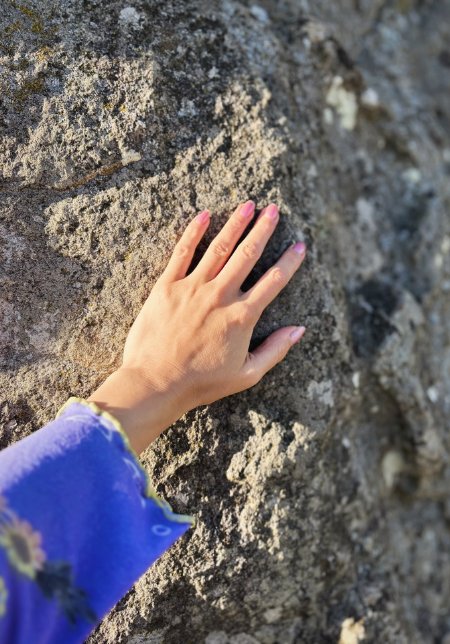
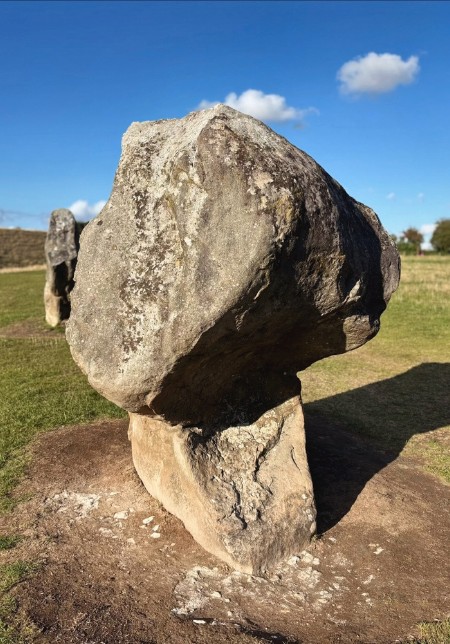
The mystery – nobody knows exactly why it was built
We have a good idea how Avebury was constructed – roughly when, where the stones came from, how the ditch was dug – but the why is still elusive.
Below are a few theories:
- A temple for worshipping deities we no longer know
- A gathering place for seasonal festivals
- A cosmic observatory to mark solstices and equinoxes
- A way to unite scattered farming communities through shared ritual
It might have been all of these things or none. Its sheer scale of these scattered monoliths suggests it was important, but its exact purpose is lost to time.

The Avebury landscape: more than a circle
Avebury isn’t a single monument, it’s a prehistoric landscape filled with reminders of the past that we’re still trying to understand today. Once you have explored the 27 stone circles, you can venture further afield to see the wider complex. You can leave your vehicle in the car park and do it by foot.
The stone circles lead out toward West Kennet Avenue – two parallel rows of stones stretching a mile and a half to the south, like a processional route.
A little further on lies West Kennet Long Barrow, one of the largest chambered tombs in Britain. Duck your head inside and you find a cool, narrow stone passageway leading to a series of side chambers where the bones of at least fifty ancestors once lay. Unfortunately, I lost track of time and I didn’t have time to venture inside (I’m still kicking myself about this). You can read more over at A Bit About Britain and English Heritage.
And then there’s Silbury Hill, a green, conical mound rising out of the flat valley floor. It is the largest man-made mound in Europe, as tall as a 12-story building. Nobody knows what it was for. Burial? Ceremony? Status symbol? Maybe all three. Whatever its purpose, it stands out. And if you’re wandering – nope, you’re not allowed to hike up it.
Together, these sites form what archaeologists call a “ritual landscape” – a network of places linked by meaning, memory, and movement. This was a stage on which entire communities acted out the cycle of life and death, season after season, generation after generation.
Explore Avebury village
Unlike Stonehenge, which sits isolated on its plain, Avebury is still very much a village. One of the prettiest little villages I’ve ever laid my eyes on. There’s a pub – The Red Lion – that claims to be one of the most haunted in Britain. There’s a barn converted into a museum, a café, St James’s church and locals who have spent their entire lives walking past these stones every day.
And that’s part of Avebury’s charm: it’s not locked away. You can visit any time during daylight hours. You can touch the stones, pray to them, talk to them. It’s peaceful. When I visited, hardly anyone was there. I spotted a few individuals, just sitting down in front of a chosen rock meditating and a few locals out walking their dogs.
I smiled at one women who looked completely lost in the moment. She had her arms flung out to the side, stretching herself as wide as possible, like she was channeling some magical powers into her body.
While I am no self-proclaimed Pagan, there’s no denying that this place made me feel connected to something greater. And the skip in my step told me that this wouldn’t be my first or last time I paid this place a visit.
For all its mystery, Avebury is approachable. It doesn’t hit you over the head with its age or its importance. It just sits there, waiting, like it has for nearly five thousand years.
How to get to Avebury
Getting to Avebury is fairly straightforward, but because it’s in the heart of rural Wiltshire, you’ll want to plan your route carefully. Here’s how you can get there:
By car (easiest option)
Driving is by far the most convenient way to reach Avebury.
- From Bath: About 50 minutes via the A4 through Chippenham and Calne.
- From London: Roughly 2 hours (M4 westbound, exit at Junction 16 near Swindon, then follow signs).
- Parking: There’s a large National Trust car park just outside the village, a short walk from the stone circle (free for NT and English Heritage members).
Driving gives you the freedom to explore the surrounding area too. I highly recommend nearby places like Castle Combe and Wells. If you are planning to rent a car, you can browse, compare, and book with Rentalcars.com.
By public transport
Getting public transport to Avebury is rather long but still doable.
First you’ll need to get a train to Swindon. I recommend booking in advance via the Trainline. Trains run to Swindon from major cities like Bath (25 mins), Bristol (25 mins) and London (1 hour fast train from Paddington). From Swindon the Stagecoach 49 bus runs between Swindon and Avebury (about 40 mins) and drops you right in the village next to the Red Lion pub.
If you are staying in Bath and would like to explore more nearby attractions, take a look at my dedicated guide to the best day trips from Bath.









